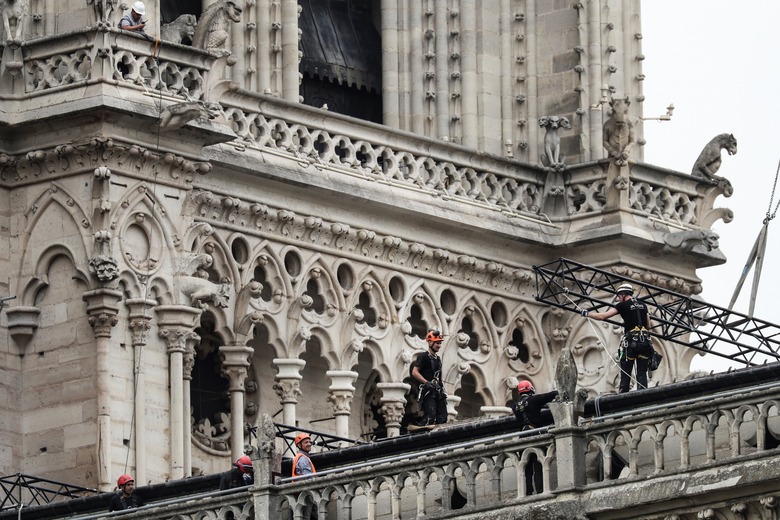There Were Some Unlikely But Very Lucky Survivors Of The Notre Dame Fire
Last week, people around the world watched in horror as Notre Dame, the centuries-old cathedral and one of Paris' most iconic structures, went up in flames.
Thankfully, first responders were able to save much of the priceless artwork and artifacts housed inside the grand building, famous for its French gothic architecture complete with stone gargoyles, flying buttresses and giant stained glass windows.
But when they dug through the wreckage, they realized that more than artwork remained in tact. In a bit of uplifting news amid the destruction, Notre Dame's resident beekeeper found that some of the 180,000 bees that lived atop Notre Dame in wooden boxes also made it through the fire alive.
Wait, Why Were Bees on Top of Notre Dame? .
Wait, Why Were Bees on Top of Notre Dame? .
When you think of all the places for bees to live, "roof of world-famous gothic cathedral" might not be the first place that comes to mind. But you might be surprised to learn that many of Paris' most incredible attractions, from the Luxembourg gardens to the famed Opera Garnier, are home to bee hives.
The hives are part of an urban beekeeping project designed to keep bee populations healthy, particularly in large cities where they may not otherwise have chances to thrive.
Why the emphasis on healthy bees? Well, they're kind of critical to our Earth's ecosystems. Experts estimate that bees pollinate about one-third of the crops we rely on to survive, making them the single most important pollinator species on the planet.
In recent years, though, bee populations have suffered staggering losses, due to a number of factors including a rise in the use of pesticides and insecticides, as well as climate change. The losses have cost farmers more than $2 billion, and have forced workers in rural China to pollinate by hand. Making sure that bees have homes in Paris and other big cities is an effort to combat those losses.
How Did the Bees Survive?
How Did the Bees Survive?
Knowing that bees have been dying off makes it all the more incredible that the ones on Notre Dame's roof made it through the fire. The little buzzing bees got incredibly lucky – they were about 100 feet away from the flames.
At that distance, they likely got an influx of smoke, but thankfully, smoke doesn't affect bees the same way it does humans. Since bees don't have lungs, they can't suffer from smoke inhalation the same way we do. Instead, smoke actually works to calm bees, for reasons that scientists don't entirely understand, but are related to their pheromones.
Some beekeepers refer to smoke's effect on bees as making them sleepy or even drunk, which is why many "smoke out" their bees when they need to do some work on the hives. During the fire, the bees likely kept calm and waited for the worst to pass, and thankfully, their hives never reached temperatures too high to melt the wax.
All in all, it was an encouraging display of resiliency for a population that, unfortunately, has been anything but in the past few years. Hopefully, just as Notre Dame is rebuilt, humans can work to make sure bee populations only get stronger in years to come.
Cite This Article
MLA
Dragani, Rachelle. "There Were Some Unlikely But Very Lucky Survivors Of The Notre Dame Fire" sciencing.com, https://www.sciencing.com/there-were-some-unlikely-but-very-lucky-survivors-of-the-notre-dame-fire-13718497/. 24 April 2019.
APA
Dragani, Rachelle. (2019, April 24). There Were Some Unlikely But Very Lucky Survivors Of The Notre Dame Fire. sciencing.com. Retrieved from https://www.sciencing.com/there-were-some-unlikely-but-very-lucky-survivors-of-the-notre-dame-fire-13718497/
Chicago
Dragani, Rachelle. There Were Some Unlikely But Very Lucky Survivors Of The Notre Dame Fire last modified March 24, 2022. https://www.sciencing.com/there-were-some-unlikely-but-very-lucky-survivors-of-the-notre-dame-fire-13718497/
